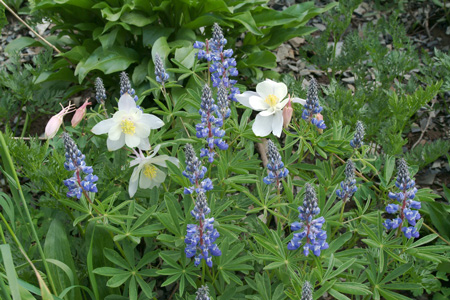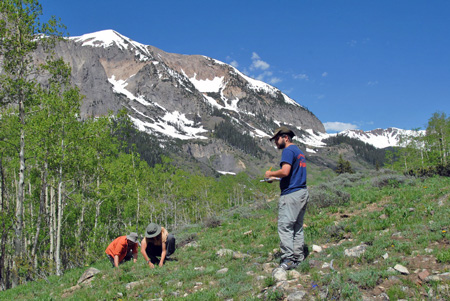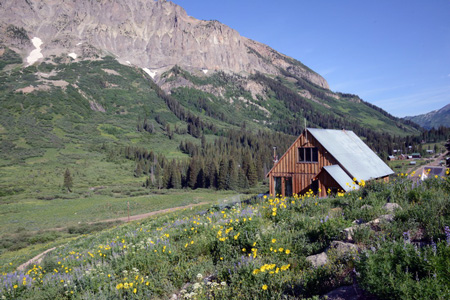- March 18, 2014
- By David Kohn
Ecologist David Inouye has spent the past 40 summers in the Rocky Mountains of central Colorado, counting wildflowers. If that sounds idyllic, it is. But it’s also work: From late May to late August, he and his research assistants visit 30 sites every other day, tabulating the blooms of 120 flower species. Since 1973, he and his assistants have counted more than 2 million flower blooms.
“There are some things that you can only study on the scale of decades,” says Inouye (above).
His work has yielded many discoveries, and the latest is perhaps the most important. Inouye, a biology professor at Maryland, has found that climate change is significantly modifying the blooming patterns of many flowers. Compared with four decades ago, half are blooming earlier, and more than a third are reaching their peak bloom earlier. In addition, many species are continuing to flower later.

The study was published March 17 in the journal Proceedings of the National Academy of Sciences. For the study, Inouye, working with Maryland postdoctoral research associate Amy Iler and University of Arizona graduate student Paul CaraDonna, focused on the 60 most common species, including dwarf larkspurs and red columbines.
The trio found that the first spring flower appears 24 days earlier, on average, than when the study began, while the last fall flower is now 12 days later. Such changes are particularly significant for a mountain ecosystem, which has a relatively short growing season.
The flowers’ response to climate change has not been linear: While some flowers appear earlier, others do not, and instead spread their bloom over longer periods. Inouye says the overall timing of the flowers’ blooms has changed, so that flowers are overlapping in new ways.
The modified blooming pattern will likely have wide-ranging effects on creatures that interact with the flowers, such as pollinating insects and migratory birds. Hummingbirds lay eggs so their babies will hatch at peak bloom, when nectar—hummingbirds’ food—is plentiful. But now, with blooms often spread out over longer periods, there may be fewer flowers at the peak time.

“This study looks at the system overall, which is great,” says Jake Weltzin, an ecologist with the U.S. Geological Survey. “This is one of the best datasets in the country. David has dedicated his life to this.” Weltzin is overseeing a 5-year-old nationwide effort to track 22,000 plants and animals at 12,000 locations, and Inouye is deeply involved in the planning of the project, which is expected to continue for decades.
Inouye does his work at the Rocky Mountain Biology Lab near Crested Butte, Colo., (elevation: 9,500 feet) and stays in a small cabin next door. His assistants live in dorms connected to the lab, which in the summer hosts about 160 researchers from across the country. “It’s beautiful. We’re surrounded by mountains,” he says. “The scenery is great. The science is great.”
And it is wild. There are bears, and scientists must be careful not to leave out food or trash that may attract any unwanted predator-guests.
Inouye, who has been a professor at Maryland since 1976, plans to move to Colorado full-time when he retires in 2015. He’ll spend the four or five warmer months in the four-room cabin, which is heated by a wood stove, and the rest of the year at a lower elevation. After a couple of sabbatical winters living in the cabin, he’s done with facing 70 inches of snow on the ground and cross-country skiing four miles to reach a drivable road.

In addition to counting flowers, Inouye has several other projects. For the past four years, he has been following the local bee population, and this year will begin putting tiny radio transmitters on hummingbirds to find out where males spend the night and females nest. He also tracks the growth of other plants, including some that live for as long as 80 years and flower only once and then die.
When he’s in College Park, Inouye works in a windowless office in the Biology Building, analyzing the data he’s collected in Colorado. He walks up and down the four flights of stairs several times a day and calculates that during his years at Maryland he’s climbed more than 2 million feet—about 400 miles.
“It’s a good way to stay in shape for the summer field season,” he says.
